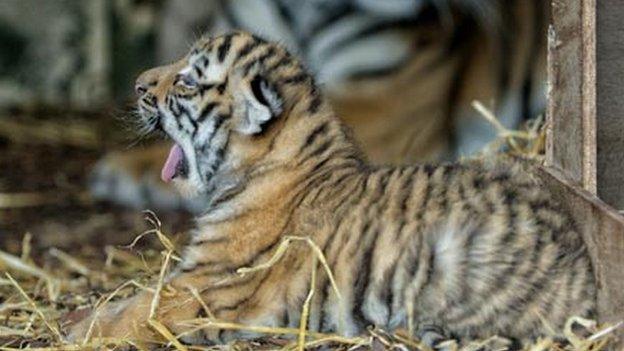Rare Amur tiger cubs born at Woburn Safari Park
- Published
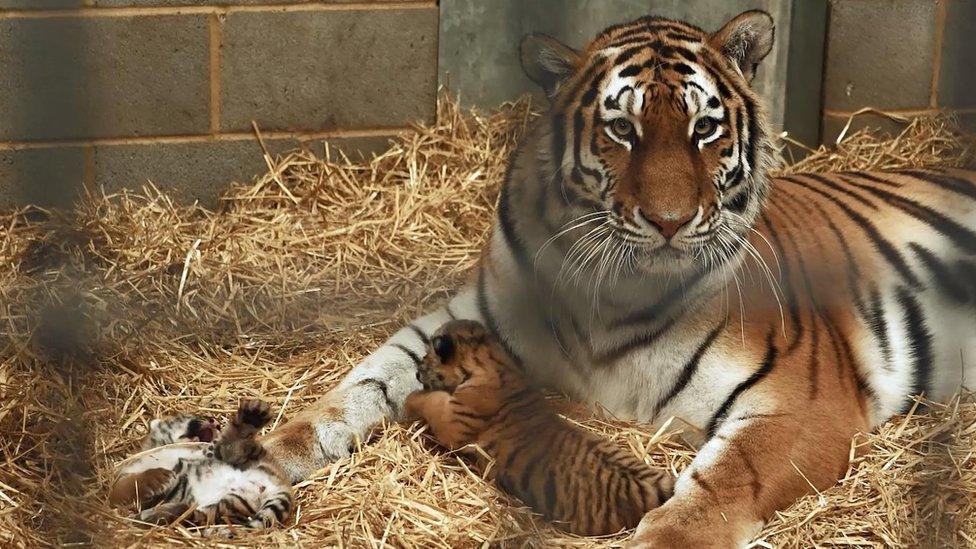
Minerva gave birth to two Amur tiger cubs two weeks ago
Two rare Amur tiger cubs have been born at Woburn Safari Park in Bedfordshire.
There are only about 520 Amur tigers - also known as Siberian tigers - left in the wild and 326 in captivity across Europe and Russia.
The two-week-old cubs, who have yet to be sexed, form part of an international breeding programme to protect Amurs which are classified as an endangered species.
They are the first to be born at Woburn for 23 years.
The cubs were born overnight on 17 September to first-time mum Minerva, who turns four this month, and father Elton, also aged four.
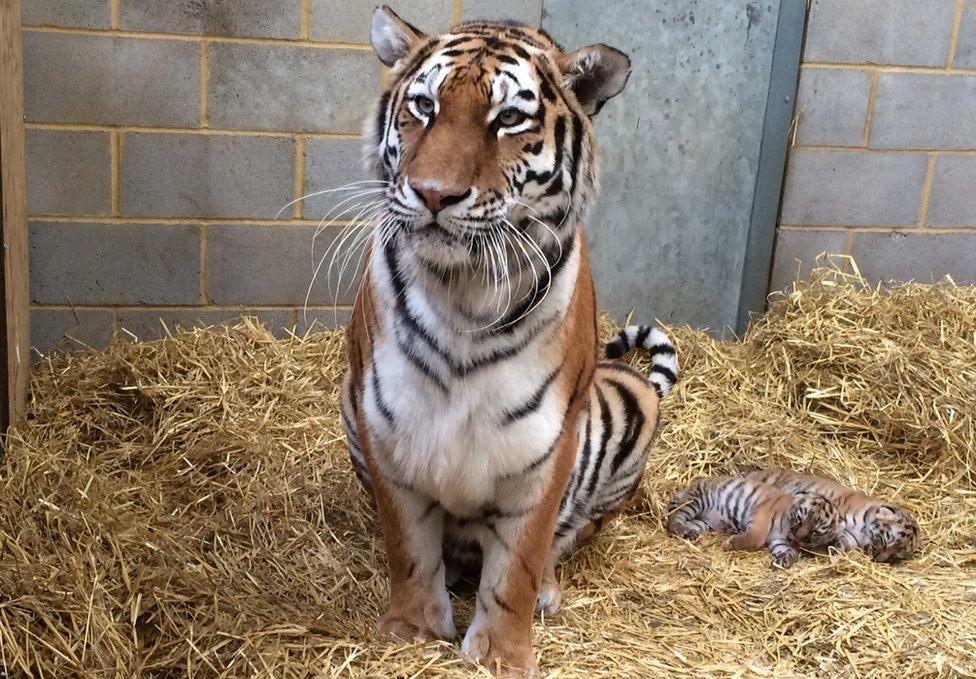
First-time mum Minerva is said to be doing the job "brilliantly"
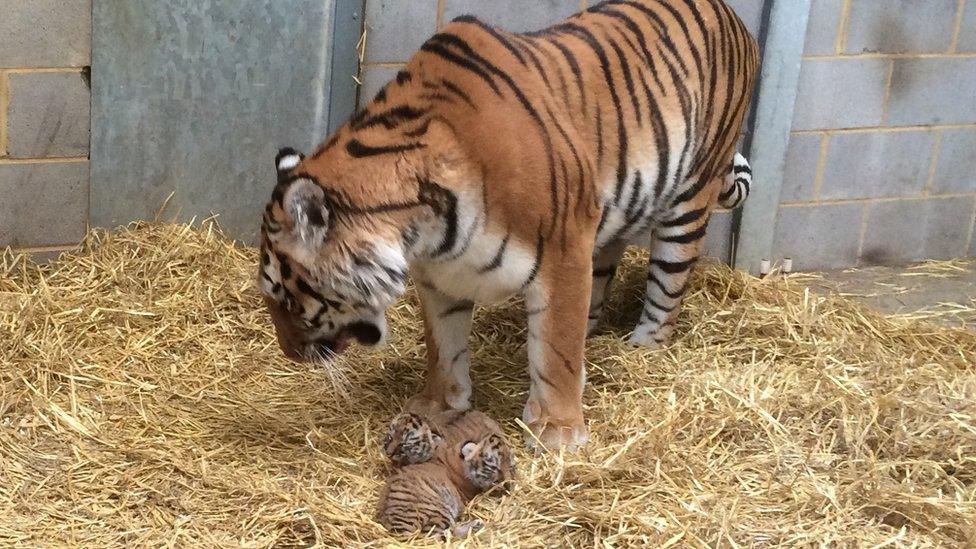
The cubs will be kept away from the public for several months
Minerva, who keepers said had "taken to motherhood brilliantly", is ranked as the seventh most important female Amur in the captive tiger population as she has few genetic relatives in captivity.
'Kingdom of Carnivores'
Mother and cubs are being kept in a private den away from the public to ensure as little disturbance as possible, however, they will be allowed out to explore the park's nine-acre tiger reserve early next year.
Minerva and Elton - who also lives at Woburn - were brought together by staff from the European Endangered Species Programme (EEP) as they were considered "an important genetic match".

Why are Amur tigers important?
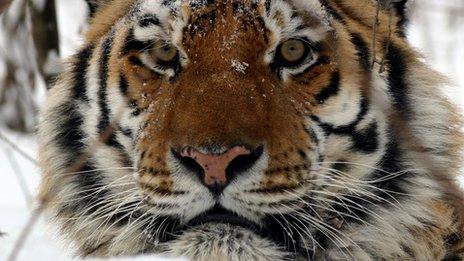
Amur tigers were once found throughout the Russian Far East, northern China and the Korean peninsula
By the 1940s hunting had driven the Amur tiger to the brink of extinction with no more than 40 individuals remaining in the wild
Russia became the first country in the world to grant the tiger full protection
By the 1980s the Amur tiger population had increased to around 500
Poaching reduced that number but conservation efforts helped re-stabilise the wild population
Poaching remains the biggest threat to the Amurs' survival although illegal logging and urban expansion threaten their habitat
Source: WWF

Jo Cook, from the Amur Leopard and Tiger Alliance, said: "Maintaining a healthy captive population of Amur tigers in zoos and parks is important because they act as an insurance population and can be used for reintroductions should that become a necessary conservation action to support wild Amur tigers."
The two Amur tiger cubs are the first to be born at Woburn for 23 years
When the two cubs are old enough they will join Woburn's Amur tigers - mum, dad and another female Neurka, in the "Kingdom of the Carnivores" - a specially designed nine-acre enclosure complete with sleeping platforms and bathing pools - as they are said to be the only big cats that like water.
- Published2 October 2015
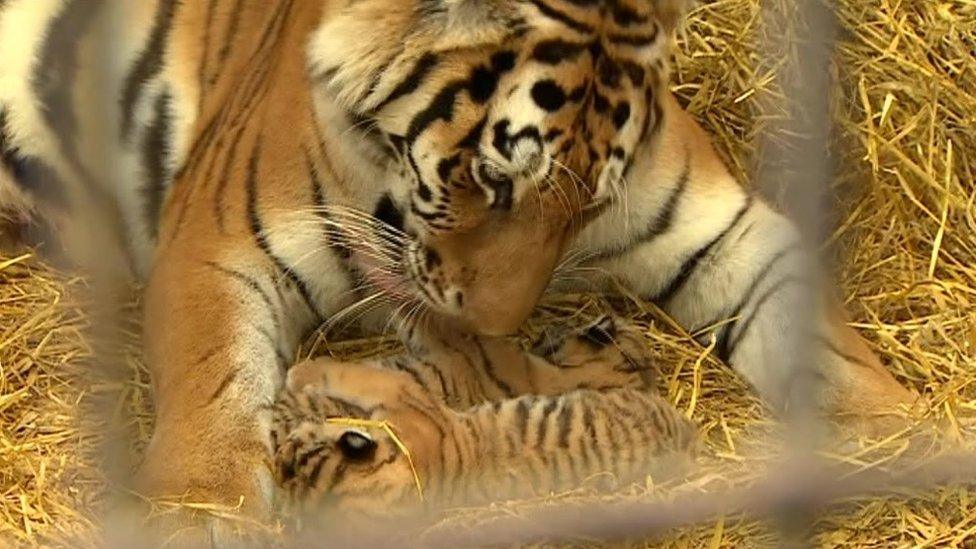
- Published4 June 2015

- Published19 February 2015

- Published26 July 2014
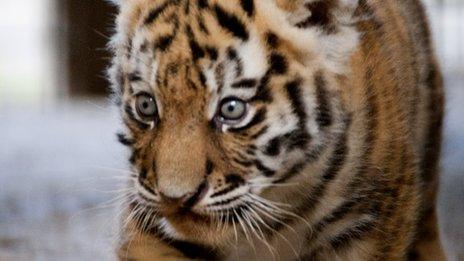
- Published2 July 2013
